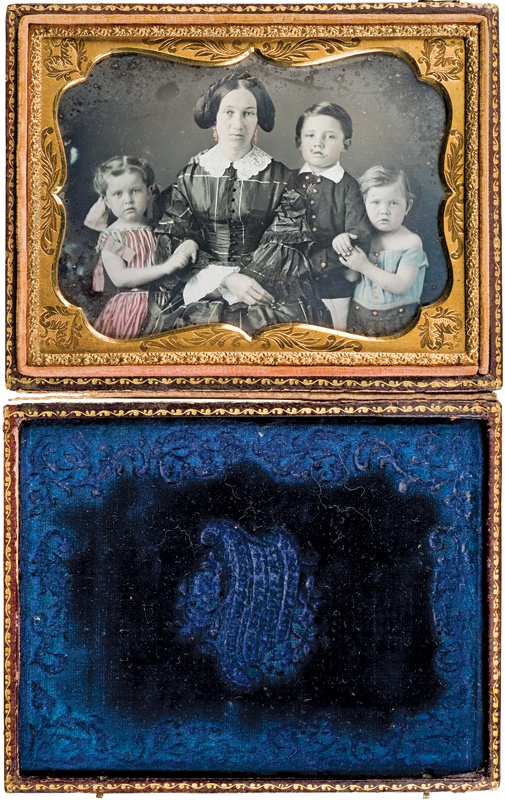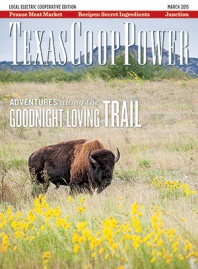Collectors are a strange but driven lot. We are passionate about what we do and tend to think others should feel the same. I hesitate to say “obsessed,” but it is not far off the mark in describing hardcore collectors. Since 1976, I have collected, studied, researched, and written about antique American photography. My initial interest was Civil War photographs taken in the southern states of the old Confederacy. For over three decades I researched images and published a calendar featuring Confederate photography. As the years passed, my interest changed somewhat, and I began to focus more on the history (from the 1840s up to 1900) of my home state of Texas. Soon it became obvious to me that early Texas photography should be the focus of my collecting.
Early Texas photographs are extremely rare compared with other geographical regions of the United States. During the 1980s, when I began to focus seriously upon Texas as a collecting theme, I realized that no private individuals were collecting or studying antique Texas photography. This was not a new realization. The lack of interest in historic Texas photography was mentioned in 1941 in The Southwestern Historical Quarterly by Samuel Wood Geiser of Southern Methodist University at Dallas.
In a letter addressed to Walter Prescott Webb, noteworthy Texas historian, and then managing editor of the Quarterly, Geiser mentioned the “splendid history” Robert Taft wrote on the history of photography in America. Geiser bemoaned the fact that Taft’s 500-plus-page book contained only a single paragraph devoted to early Texas photography. The obvious conclusion for Geiser was “the need for some thoroughgoing work on the history of photography in early Texas.” The professor briefly touched on the identity and work of some of the earliest photographers in Texas, stating that his brief notes might serve as a “starting point” for someone in extending that single, brief paragraph on Texas in Taft’s “Photography and the American Scene.”
No doubt Geiser’s comments were of particular interest to Webb, who was married to the daughter of William James Oliphant, a prominent and important nineteenth-century Austin photographer. Oliphant was a Confederate veteran who took up photography as a profession after the American Civil War. He photographed important people and events, and he had also known and studied with two of America’s best-known photographers, Alexander Gardner and Timothy O’Sullivan of Washington, D.C. Oliphant also was an early collector of photographs, especially those by his friends and associates. Included in his collection are previously unknown and unpublished photographs of his own, O’Sullivan, and other photographers that worked at Gardner’s Gallery, such as William R. Pywell. After Oliphant’s death Webb and his wife preserved Oliphant’s collection of photographs.
I like to think that Webb understood the historical value of what he had saved. Years later in a quirk of fate and a stroke of luck, I was able to acquire the bulk of the Oliphant photograph collection from Webb family descendants. This collection now is preserved as a sub-collection in the Lawrence T. Jones III Collection at the DeGolyer Library [at SMU].
When I became serious about collecting early Texas photography during the 1980s, I found that very little had been written or published about nineteenth-century Texas photography since the Geiser-Webb discussions in 1941. One notable exception was “The Diamond Years of Texas Photography,” written and published in 1975 by Ava Crofford. However, this book is primarily a history of the Texas Professional Photographers Association from 1898 to 1973, and it contained very little information about what I consider the heyday of early Texas photography, from the 1840s through the 1870s. Another important edition was “Catching Shadows: A Directory of Nineteenth-Century Texas Photographers” by David Haynes. Published by the Texas State Historical Association in 1993, Haynes’s comprehensive work is a checklist of more than twenty-five hundred working photographers in Texas from 1843 to 1900. Haynes provided not only a listing of early Texas photographers in alphabetical order, but he also included known biographical information and dates of operation. His work continues to be an invaluable reference for anyone interested in nineteenth-century Texas photography.
——————–
Excerpted from the book “Lens on the Texas Frontier” by Lawrence T. Jones III (Texas A&M University Press, 2014).


